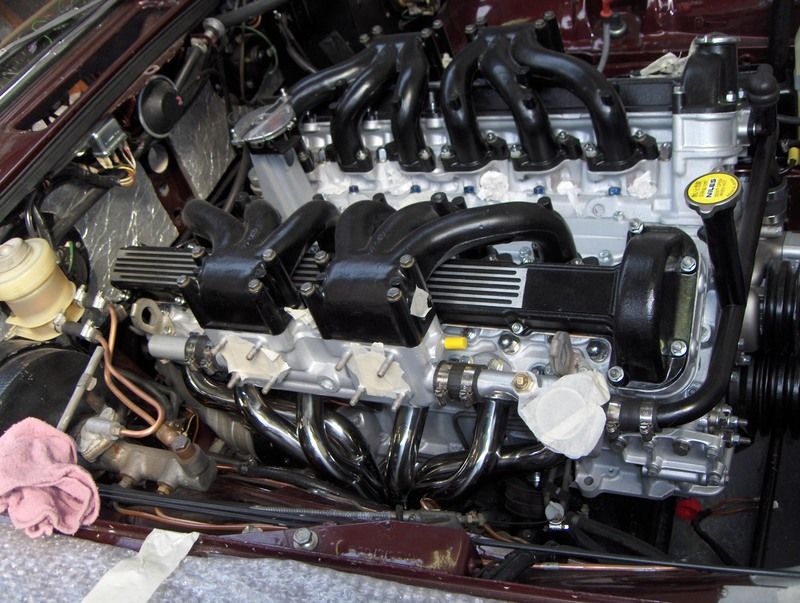My first e-type arrived this morning! It's an unrestored 1973 2+2 in red. Not perfect but seems like an honest enough car. Very excited anyway - but a few issues with running. I've checked all plugs, leads, rotor arm and distributor cap and apart form having one plug that's different (strangely - I'll get that sorted) everything else seems nearly new. Plugs were not too bad apart from a few being a little bit sooty and one being petrol washed. There were a few pipes split and clips missing so have tried to do a little under bonnet tidy up.
The question I am left with (today at least!) is:
What is meant to connect to the vacuum connections that project towards each other from the inlet manifolds? One of mine was connected to the 'valve' towards the ram air end of the air intake but not sure if that's right? I've had a look through the manuals and can't find any references to these ports.
The other one on that side did not have anything. The two on the other side did not have anything connected at all.
Are these vacuum outlets and should they have something connected or be capped? I did not think to run the engine and stick my finger over to feel for vacuum and the car is reversed into the garage now so I would rather not contaminate my lungs with any more unburnt fuel today!
Found a good picture! These little things that protrude, facing each other on the sides of the induction manifolds that 'face' each other on the same cylinder bank. They have masking tape on them in this picture.

Thanks!
Calum





